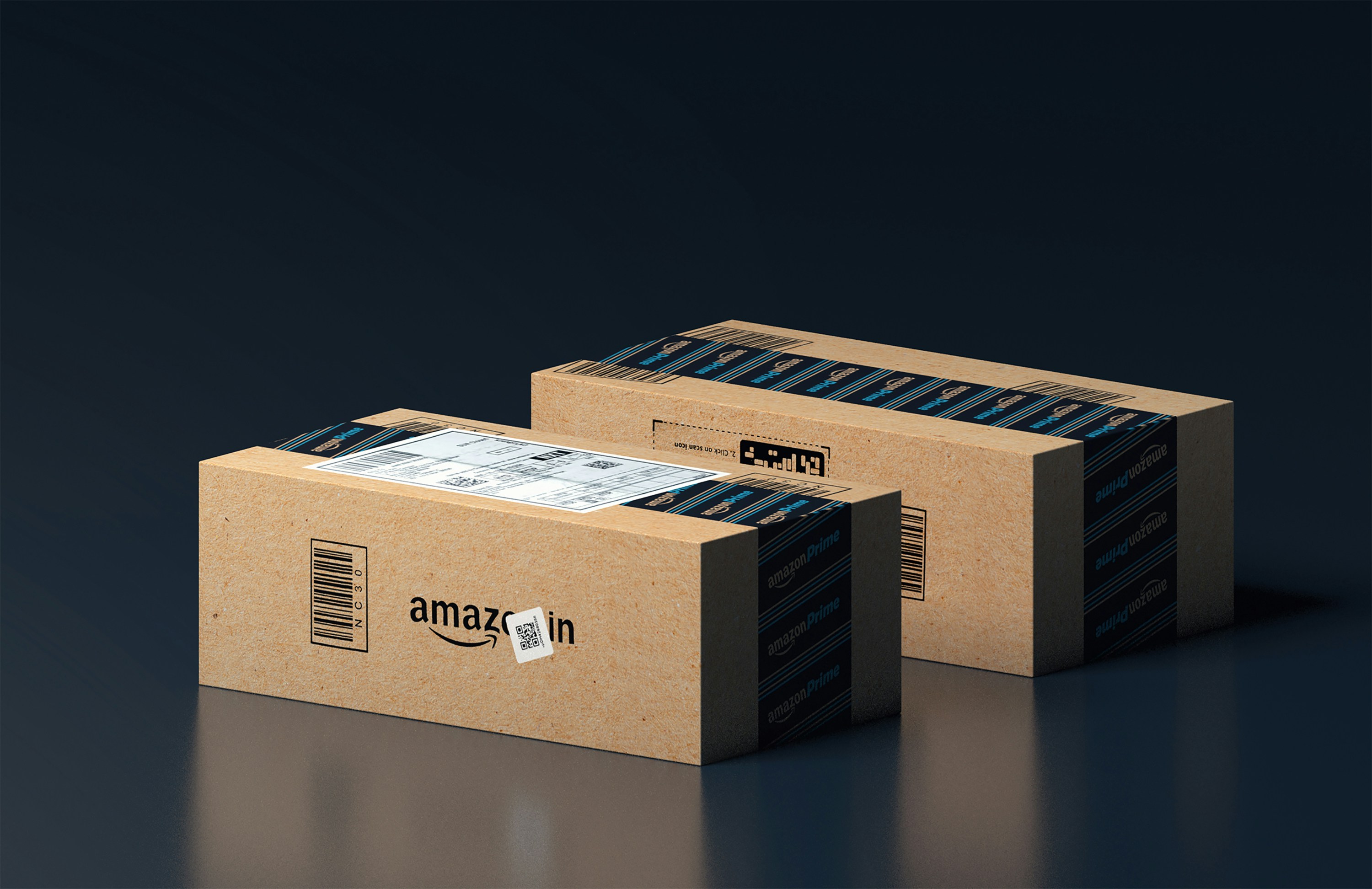In Saudi Arabia, a staggering 91% of consumers have been embracing e-commerce, with 14% engaging in daily online shopping sprees. And, in UAE, the commerce tide has surged to a staggering 96%, symbolizing a monumental shift in consumer habits towards the digital realm. As the dust settles on traditional retail paradigms, we’re seeing a brand new approach to how retailers use media. Communicate sat down with Filip Jabbour, Regional Head of Advertising across MENA for Amazon to delve into the know-how of this approach and what its growth in the Middle East could mean for retailers and advertisers. In the dynamic landscape of Middle Eastern commerce, where digital footprints are expanding at an unprecedented rate, retail media emerges as the next frontier of advertising prowess.

What is retail media and/or a retail media network? Are they any different? If so, how?
The term retail media refers to the advertising placed on a retailer’s media network. Third-party businesses that look to reach relevant audiences will work with a retailer to create ad campaigns for those digital channels. In essence, for a brand, retail media is a media buy fueled by shopping behaviors or insights.
Currently, retail media networks are gaining traction in the advertising world. It’s an important category for the growth of programmatic advertising, but there are a lot of marketers who still don’t know about the retail media landscape or about buying media in this space.
A retail media network is an advertising infrastructure that comprises a collection of owned digital channels (e.g. websites, apps), partner channels, and non-digital channels that are offered by a retail company to third-party brands for their various advertising purposes. For example; owned and operated digital channels such as the Amazon Store or entertainment properties (Twitch or Prime Video) will have solutions such as Sponsored Ads, Brand Stores and video inventory. With the growing popularity of online shopping for consumers, retailers are recognizing their digital channels as useful opportunities to help brands reach and engage shoppers. This helps marketers potentially reach more relevant audiences while also providing brands with audience and first-party (shopping) insights that can help make their marketing strategies more effective.
How is Amazon using retail media to pave the way for brands and retailers to drive effective purchase journeys?
Amazon Ads is helping brands to reach customers wherever they are. This means our solutions are designed to reach shoppers in and beyond the Amazon Store. We capture their attention in places they choose to spend time, creating opportunities for brands to reach and engage customers throughout their journey across a diverse range of devices, retail, and media channels. With diverse content, we are helping brands find incrementality, and unique audiences, and connect them to the right customers in the context that matters. The specific retail media solutions offered by Amazon Ads are full-funnel marketing solutions for both endemic (brands that sell on Amazon) and non-endemic (brands that don’t sell on Amazon) advertisers to reach and engage with shopping audiences, fuelled by first-party insights from hundreds of millions of global active customer accounts.
In what ways can retail media networks help brands and retailers leverage the power of commerce – keeping in mind the fact that every consumer is online in today’s digital landscape?
One of the biggest benefits of retail media is that it can help brands better connect with relevant audiences. Since shopping audiences are generally in the mindset to discover, learn more about a product or buy when they’re visiting a digital store, seeing a brand’s advertisement on a retailer’s website can help that brand stay top of mind for customers as they shop. Another benefit of using retail media networks is access to first-party insights which can help better inform the brand’s marketing campaigns. Beyond insights, retail media networks can also help brands better link their ad spend to conversion, driving closed-loop measurement. The journey between when customers engage with digital ads to when they make a purchase can help brands better understand the connection between ad spend and product sales, which can help them analyze their return on investment and make more strategic business decisions like increasing inventory, allocating resources, or increasing ad budget.
All too often retail media is seen as a purely lower-funnel play. But very few shoppers convert to purchase having never heard of a brand, and a customer doesn’t need to be shopping in that moment to discover a product. Advertisers need people to recognize, recall, and think of their brand in buying situations, which is why Retail Media actually starts at the top of the funnel. Through Amazon DSP brands can reach audiences and programmatically buy ads to reach new and existing audiences anywhere they spend their time. An effective retail media strategy enables brands to seamlessly integrate their messaging into the daily routines of their audiences, connecting experiences across various channels and devices, and ultimately driving sales.
Where does the Middle Eastern market stand in embracing retail media – do you have any numbers or case studies that can support your answers?
Here in the Middle East, retail media is growing rapidly. In Saudi Arabia, for example, 91% of consumers now shop through e-commerce according to McKinsey. Perhaps even more striking is that 14% of them say they shop online at least once per day. In the UAE, 96% of consumers now shop via e-commerce, an increase from 89% last year. These numbers are a testament to the rapidly evolving digital economy and the consumer demand for flexibility and comfort to shop online.
Combining robust first-party insights, exclusive inventory, and engaging ad formats, retail media is now the third-largest digital channel in the world—and to put that number into context—it will likely overtake social advertising in the next five years to become the second-largest digital channel behind just paid search according to projections from eMarketer. Last year, we collaborated with Finish to boost product adoption through dishwasher sample bundles in the UAE. The result? A 38% increase in purchase rates, demonstrating the effectiveness of messaging in driving sales and capturing customer interest.
On the non-endemic advertiser front, Emirates Islamic Bank worked with us to drive awareness and adoption of their credit cards through an owned page on Amazon. As for product info, a DSP campaign targeting the FinServ audience segment fueled by first party signals, and a homepage takeover during the Q4 shopping season, resulting in an 80% drop in CPL (cost per lead) based on Amazon attribution.
How is retail media a great approach to embedding omnichannel marketing?
Retail media omnichannel marketing is a great way for all brands to leverage all touchpoints a retail media network can offer. Although it may not be obvious at first, retail media is relevant for both endemic and non-endemic advertisers. For example, shoppers browsing for snorkels and flip-flops or purchasers of plane pillows, earplugs, and cozy socks are probably getting ready to rack up their air miles. These retail insights can be used to inform campaigns running on Amazon or other channels via the Amazon Ads DSP.
An endemic advertising partner, Garnier, partnered with us during Ramadan to run a first-of-its-kind 360-degree campaign. Garnier brand integration took place across TV, out-of-home (OOH), and digital placement for the Amazon KSA and UAE Ramadan campaigns. In synergy, Garnier also utilized Sponsored Ads solutions resulting in a 2.6x increase in branded keyword traffic and a 2.3x return on ad spend. On the non-endemic global solutions front, Emirates Airlines partnered with Amazon Ads to reach US travelers through streaming TV, digital and audio ads utilizing the power of retail media networks and first-party signals across different offerings to achieve a 12% uplift in recall and 6% uplift in brand favorability through measured through the Amazon Shopper Panel survey. The strategy for success in non-endemic categories is deeply intertwined with the effective use of first-party insights. These insights, grounded inactions or behaviors of customers such as purchases, site visits, or app usage, provide a solid foundation for understanding customer preferences. This data-driven approach offers a strategic advantage, especially for non-endemic brands looking to reach new audiences or segments.
And finally, brands such as Unilever, Puck, Nivea, and First Abu Dhabi Bank have leveraged the Amazon Ads creative canvas to reach customers through custom executions across the Amazon store, Amazon boxes, and Amazon Fresh bags. The connected worlds of retail media networks (like Amazon Ads) allow advertisers to reach customers wherever they spend time, across retail stores, plus thousands of apps and websites / across formats, websites, and devices, where they browse, stream, or shop.
The article was first published in Communicate's Issue 180 2024.






